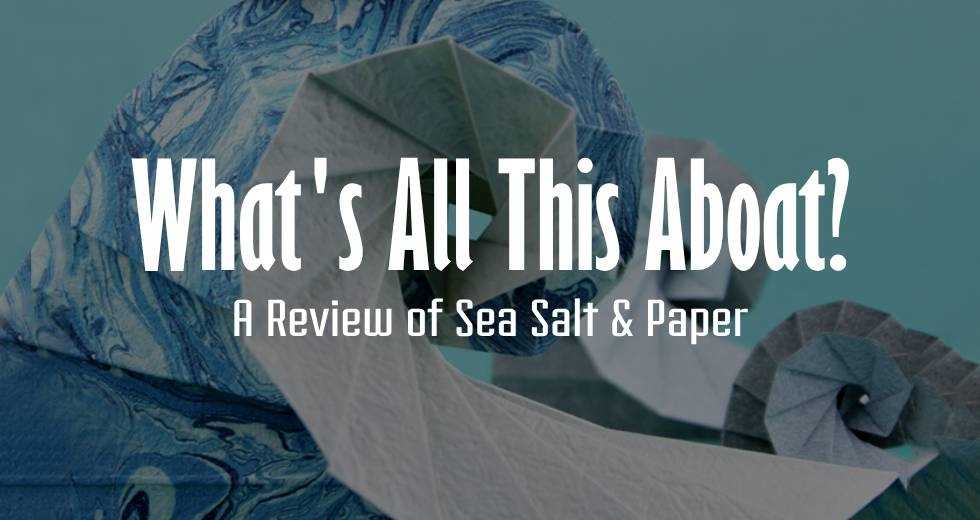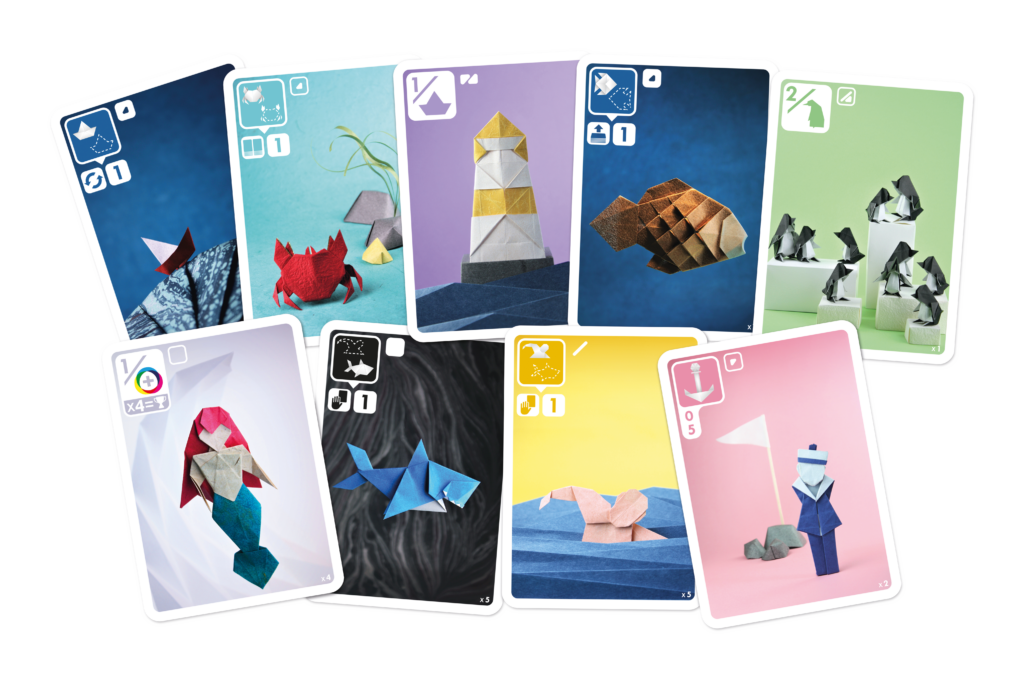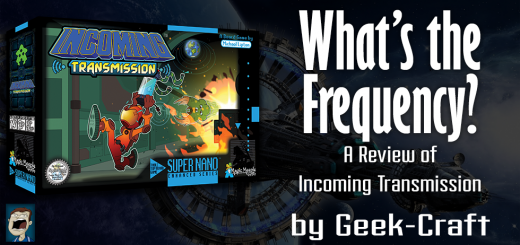What’s All This Aboat? – A Review of Sea Salt & Paper
I was at my new FLGS last night and taught Sea Salt & Paper and thought it was time to review it after getting in another play with some new folks. I’ll be sure to pepper in some puns and dad jokes into the review, you know, just to spice things up. It’s always the season for puns.

Sea Salt & Paper is a set collection style card game with adorable art and some clever game design. The core rules are simple: On your turn, take either one card off of the top of either discard or draw two cards from the deck and discard one of them to one of the discard piles. You can also potentially play a pair of Duo cards on your turn to get a bonus action. A pair of fish cards will let you take the top card off of the deck. A pair of crabs will let you dig through a discard pile for a card of your choosing. A pair of boats will let you take another turn. My favorite action just because of the theme is a shark and a swimmer, which lets you take a card at random from another player’s hand. You are not required to perform the Jaws theme, but it’s highly encouraged. Playing these pair of cards means people know you have the points, but the effect is usually worth the sharing of that information.
The other cards in the deck are more traditional for set collection games. For example, collecting octopuses gives a flat score of 3 points for every one past the first. There are also a few cards that give bonuses based on other cards, such as the lighthouse that gives one point per boat you’ve collected, even if you don’t have a pair of them for the ability. There are also four mermaid cards that give you one point for the color you have the most. If you have more than one mermaid, you have to pick a different color for each one. If you have all four mermaids, you win immediately and you’ll have a tail to tell.
When a player gets to 7 points between cards in hand and on the table, they can end the round by either calling “Stop” or “Last Chance”. If they call Stop, the round immediately ends and all players score the cards they have in their hands and on the table. If the player calls “Last Chance”, they are betting they’ll outscore everyone else at the table, but those other players also get one last turn. If the bet is correct by outscoring or tying all of the other players, the person who called “Last Chance” not only gets a color bonus of one point per card in their most popular color (just like mermaids) but all opponents only score that color bonus and not the points for their cards. However, if the bet isn’t won and someone at the table has more points, the bet is lost and the person who called “Last Chance” only gets a color bonus where all other players score normally. This is a nice touch to the game and can result in some nice rounds for scoring or a lot of friendly frustration when it doesn’t work out.
The art style is wonderful, using origami pieces to illustrate boats, fish, and the other cards. I love the intricacies of folding origami and the pieces chosen for this game are very well done. Making waves and other water-themed things out of paper is a lovely way that helps this game stand apart from other card games. The cards also have color-blind friendly icons which I feel is a nice touch and something I wish more games did, even if I am not color-blind myself.

Sea Salt & Paper Card Art – image provided by publisher
Overall, the gameplay is easy enough to understand. However, the player aids could be a little clearer. The Duo cards and special actions are laid out nicely, but there’s no reference for the other kinds of cards, which can lead to new players being confused about what options are in the deck. There is a little number on each card saying how many are in the deck, but when you are new to the game and you draw the Penguin Colony card that scores two points per penguin, you don’t know how many penguins are in the deck and therefore how good or bad the card is.
One minor complaint about the game is that the cards are just too thick. Where most cards in games are around 0.35mm thick, but the cards in Sea Salt & Paper are 0.44mm thick. This doesn’t seem like a huge difference, but it means shuffling the cards can be difficult and that any bends or damage to the cards are harder to ignore. It’s a silly thing, I know, but having a toddler can expose you to issues with games you wouldn’t normally notice.
There is also an expansion for the game called Extra Salt. I’m normally all for expansions to games, and while I haven’t played with the expansion cards yet, an MSRP of $6.95 for 8 playable cards and some new rules is frustrating. I understand that smaller products won’t be priced at the same rate as the full game, but it just seems expensive to me.
If you’d like to try Sea Salt & Paper, you can do so on BoardGameArena. It does require the game creator to have a premium account, but the price for being able to check out this and other games I feel is well worth it. While I have some issues with the physical production of the game and the price of the expansion, I still enjoy playing the game and it’s one that is easy to pack into a game bag just in case. The art is lovely, the game play is easy enough to teach, and it doesn’t outstay its welcome.





